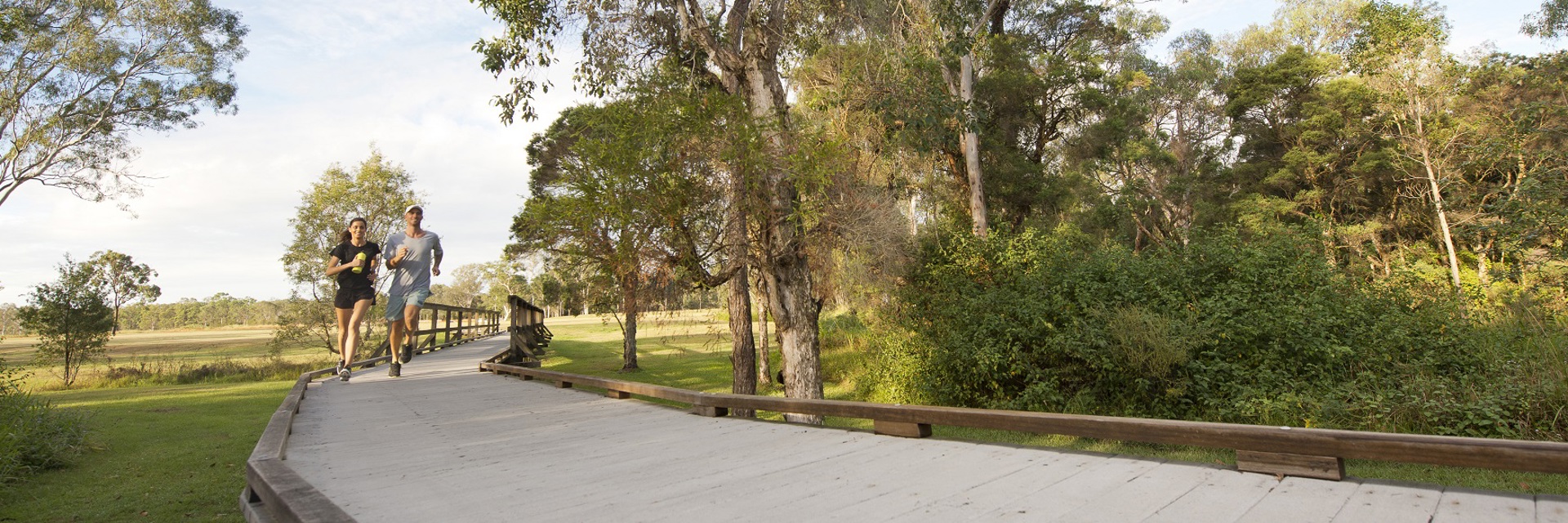Boosting locally native species at Pallara
We can deliver a net positive impact on biodiversity value by providing secure tenure for conservation areas and by rehabilitating more native habitat than we remove over the course of a development.
At our Pallara (Qld) residential community development, we are replanting and rehabilitating at least 56 hectares of native bushland and waterway within the site boundary. We are also providing for a further 32 hectares to be placed into permanent conservation outside of the project boundary to offset 13 hectares of habitat loss within the project boundary. Once rehabilitated the area will be protected by Brisbane City Council as an environmental conservation reserve and community open space.
A large proportion of our residential community at Pallara (Qld) is to become a conservation zone (marked in green shading), with additional areas (blue and maroon shading) to undergo ecosystem rehabilitation to restore ecological connectivity within the Oxley Creek corridor.
We have allocated around $3.7 million to biodiversity restoration activities associated with the development. Suitable species native to the local area have been selected for all vegetation rehabilitation areas to build resilient habitat. We are using drought-tolerant species for open space areas to improve likelihood of survival and reduce requirements for water and maintenance, eliminating irrigation requirements.
Over 6,800 trees of species suitable for koala habitat and foraging will be planted. We also leverage locally native species in our water sensitive urban design to provide water quality filtration. In the past 12 months we have planted 72,000 plants and rehabilitated 5.6 hectares as part of a five-year site rehabilitation contract. We have installed 20 nesting boxes to improve habitat for birds, possums and other species that would typically access old growth trees with hollows.
We have installed cameras to monitor the rates of success associated with the nesting boxes and have observed gliders, bats, possums and parrots using the boxes. Results of our monitoring will help inform our understanding of how we can use nesting boxes as a means of repopulating target species.
Our focus on biodiversity at Pallara means that the development will have a positive impact on biodiversity value overall (biodiversity calculator score of +27.59).

